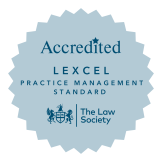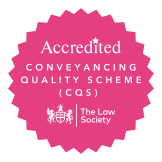Blog
Employee Ownership Trusts (EOTs) - a great tool for managed succession
- Posted:
- 7 October 2024
- Time to read:
- 5 mins
Employee Ownership Trusts have been around for a considerable time, yet they are only now gaining traction as a viable option that allows owners of a company or a limited liability partnership (LLP) to exit in a managed way over a period of time. An EOT can be a good option in situations where the next level of management is not quite ready to take over, but the owners wish to plan for their own exit.
Quite often the routes to exit considered by owners include a trade sale, a sale to private equity or a Management Buy Out (MBO). These can be inappropriate or unappealing – the business might be unique, making a purchase by a competitor unlikely; the owners might not want to become part of a larger organisation; an MBO requires staff to often take on debt, which may include personal risk; or the business might not be of a size where an Initial Public Offering (IPO) is an option. An alternative option that allows owners to retain a degree of control, incentivises staff and allows a phased transition while being tax free (other than Stamp Duty), are Employee Ownership Trusts, and they are being seen as a great alternative.
There are certain regulatory requirements that need to be met and there are potential tax traps for the unwary, but all of these can be managed with proper advice from lawyers, accountants and other EOT specialists, along with well drafted documents. It is also often the case that compared to a more conventional exit, the professional fees will be considerably lower.
Key requirements
- The business must be a trading company (so an LLP would need to be transferred to a company – which could be done without any tax consequences – before implementing the EOT).
- In the 10 years prior to sale and at any time afterwards, the number of “participators” cannot exceed 40% of the total number of employees of the company. Owner directors will typically be the participators.
- The trustees of the EOT must meet the controlling interest requirements.
- The EOT must apply the settlement of any capital or income to all eligible employees on the same terms. Any owner who held or was entitled to acquire 5% or more of the company’s share capital would be excluded. “Same terms” does not mean all eligible employees must receive the same, but that the same criteria is applied to calculating an employee’s entitlement – hours worked, length of service or remuneration.
- An owner cannot claim relief on any related disposal: no capital gains tax (CGT) is payable on the first disposal of shares to an EOT but will be payable on subsequent disposals.
- The EOT must not overpay for the shares in the company. Overpayment would be a breach of the trustees’ duties, and any overpayment would likely give rise to an employee related securities income tax charge on the amount above market value.
Key advantages
- The EOT buys more than 50% of the shares in the company.
- The selling owners become the trustees of the EOT and can remain as directors of the business while it transitions to the new management.
- The owners can receive full value for their shares, funded by what would otherwise have been taken as dividends, although much of the value will be on deferred terms.
- The sale can be kickstarted by using retained earnings or possibly leveraging new opportunities to borrow money.
- Staff will feel motivated because they will be the owners of the company, via the trust.
- Staff can be paid annual bonuses of up to £3,600 per person tax free.
- EOTs are government approved and promoted.
- The money paid to the selling owners is tax free.
- It is possible to further incentivise employees through an Enterprise Management Incentive (EMI) Scheme.
When an EOT is not appropriate
- The company is wholly owned by companies rather than individuals.
- The valuation of the company is too high – it would be unusual to see an EOT valuation of more than £50 million.
- The shareholders of the company are regularly changing, for example, with inter-generational changes.
- The business is on a rapidly increasing profit trajectory and the owners would not want the employees to benefit if the company was sold on for a large profit in a few years’ time (note this might be overcome to a degree by the inclusion of anti-embarrassment provisions in the share purchase agreement).
- A private equity or trade buyer is a viable option and one that may enable the owners to receive payment for their shares sooner.
- If the timeframe for payment of the deferred consideration will be longer than 10 years or the future profitability of the company is in doubt.
Process
The starting point will be to take tax advice on using an EOT and obtain a robust valuation of the company. If you decide to proceed, the first steps will be to apply for tax clearance to ensure the share disposal is exempt from CGT and to appoint solicitors who will be able to prepare the necessary documentation for you. A specialist solicitor will ensure that the documentation produced provides you with the appropriate protections, which, if followed, will ensure the success of the EOT and compliance with the regulatory conditions. They can also help to keep arrangements to the minimum required to ensure an effective scheme that still protects the owners and the trustees. For example, articles that discuss EOTs often refer to employee councils but in many situations these will not be appropriate.











